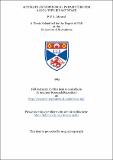Accurate astrophysical parameters for algol-type binary stars
Abstract
We present new, accurate astrophysical parameters for both components of the six short-period Algol-type binary stars RZ Cas, AT Peg, TX UMa, AF Gem, RU UMi and HU Tau. The accuracy of the astrophysical parameters is ensured by the determination of a mass ratio for each of the systems from the spectroscopic orbits of both components via the cross correlation technique. For RZ Cas and AT Peg we have developed a simple technique to correct the observed photometry for the presence of the secondary component. Spectral classification of the primary component of AT Peg was aided by the use of an improved Doppler tomography technique. The systems RZ Cas, AT Peg, TX UMa, AF Gem and HU Tau are found to be apparently normal semi-detached Algol-type systems and accurate masses and radii have been determined with a typical precision of a few percent. For RU UMi we have been able to confirm the suspected semi-detached configuration. We have compiled a list of nine Algol-type binary stars, five from this study, for which the observed astrophysical parameters have been determined accurately using a combination of both spectroscopic and photometric data in a self-consistent solution. The general model of non-conservative case B evolution adequately explains the properties of these systems as a group. Angular momentum loss via a magnetic stellar wind is shown to be an important factor in the evolution of these systems. However, there appear to be no published evolutionary models which can be used to estimate the properties of the progenitors of these systems. For the more massive systems the best available models predict periods that are too large by ~50-250% and luminosities for the faint components that are too high by factors of 10-20.
Type
Thesis, PhD Doctor of Philosophy
Collections
Items in the St Andrews Research Repository are protected by copyright, with all rights reserved, unless otherwise indicated.

